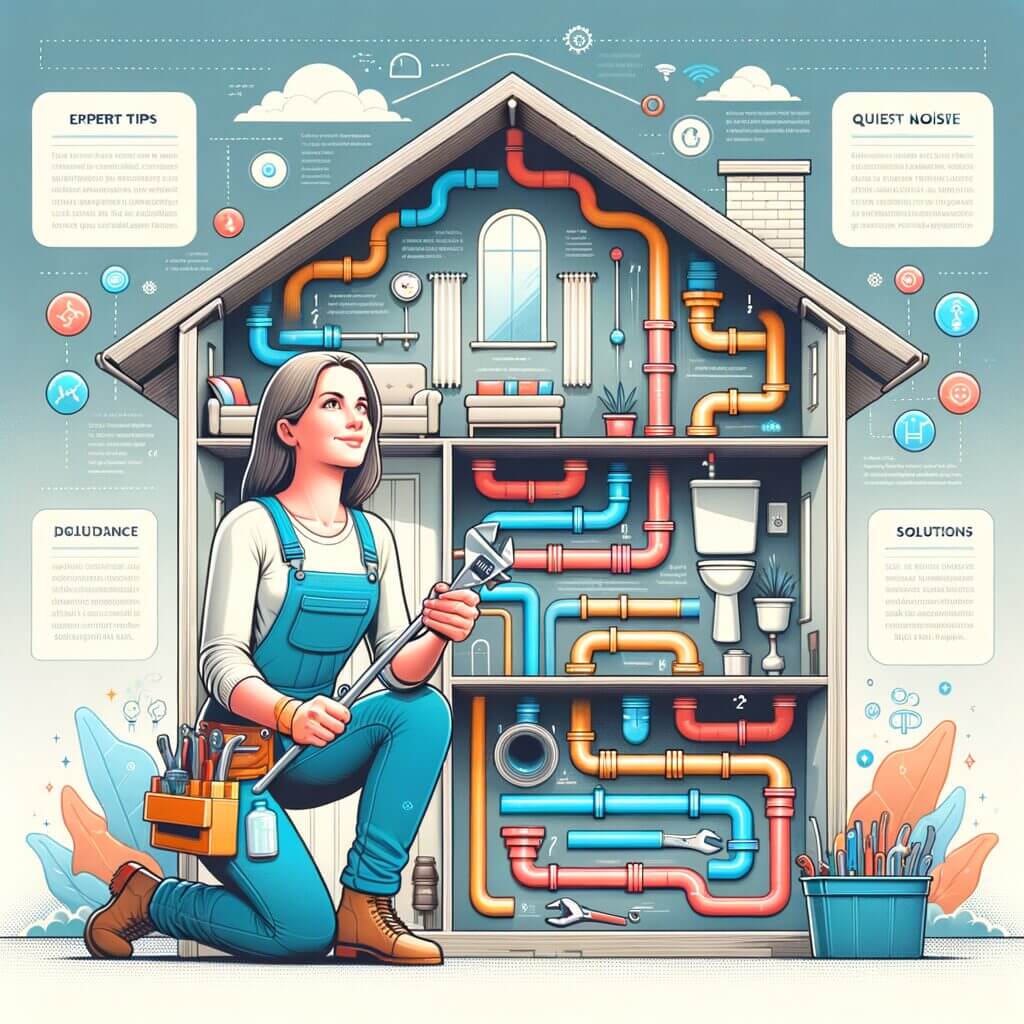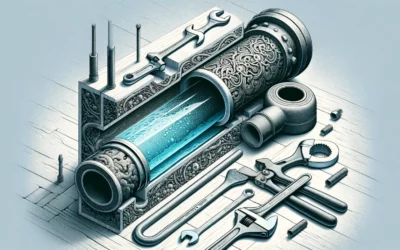Welcome everyone! Today’s engaging post provides expert insights on a common household issue - noisy water pipes. We have compiled some effective, tried-and-tested tips to silence those bothersome sounds reverberating throughout your house. This post is essentially a guide, backed by professional plumbers’ advice, to help you identify the causes behind the racket your pipes might produce and measures to neutralize it. Packed with practical and easily implementable solutions, it aims to render your home a more peaceful place. Read on to arm yourself with information that can transform your DIY plumbing skills and spare you expensive professional help.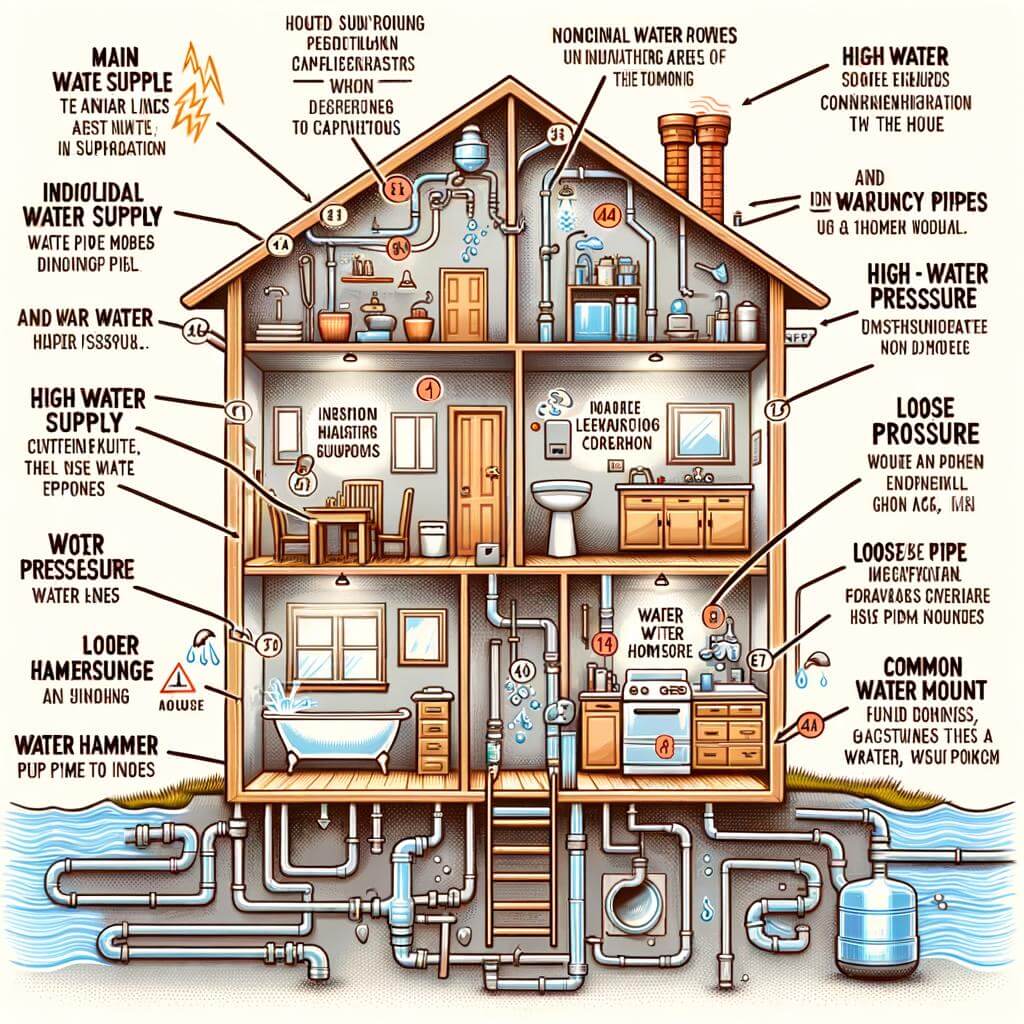
Understanding the Reasons for Noisy Water Pipes
Why are your water pipes making that unbearable noise? This undesirable symphony usually kicks in when you turn off the water suddenly or if the running water inside the pipes is too fast. It’s not only disturbing, but it could also indicate a bigger plumbing issue waiting to happen. Let’s break down the main reasons that could cause your water pipes to make so much noise.
High water pressure: One common cause for noisy water pipes is overly high water pressure. If your water pressure is beyond 80 psi, the rushing water’s velocity can cause turbulence and vibration, which leads to all that noise. A pressure reducing valve could come in handy in this case. It balances water pressure, keeping it within the safe and quiet range.
Loose Pipes: Another probable reason it seems like someone’s knocking on your pipes is that the pipes are loose or not properly secured. When water flows through them at high speeds, they might shake against the walls and each other, causing a clatter. Inspect your pipes and if you notice any loose ones, just fasten them.
Air in the Pipes: They say air is light, but when its bubbles get into your pipes, they can actually cause quite heavy noise. The air causes water to crash around in the pipes, creating banging or hammering sounds. You can get rid of this air by turning on all your faucets and letting the water run until it flows smoothly without any bubbles.
Valve or Washer Issues: If you only hear the noise when you turn off a particular faucet, the culprit might be a defective valve or washer. In these instances, replacing the problematic parts can bring peace back into your home.
Remember that while these fixes can mitigate or eliminate pipe noise, it’s also vital to identify and understand the root cause of the noise. Prolonged water hammering can damage your pipes, eventually leading to leaks or bursts. Thus, it’s advisable to call a plumbing professional if you can’t solve the problem yourself or if it persists after your efforts.
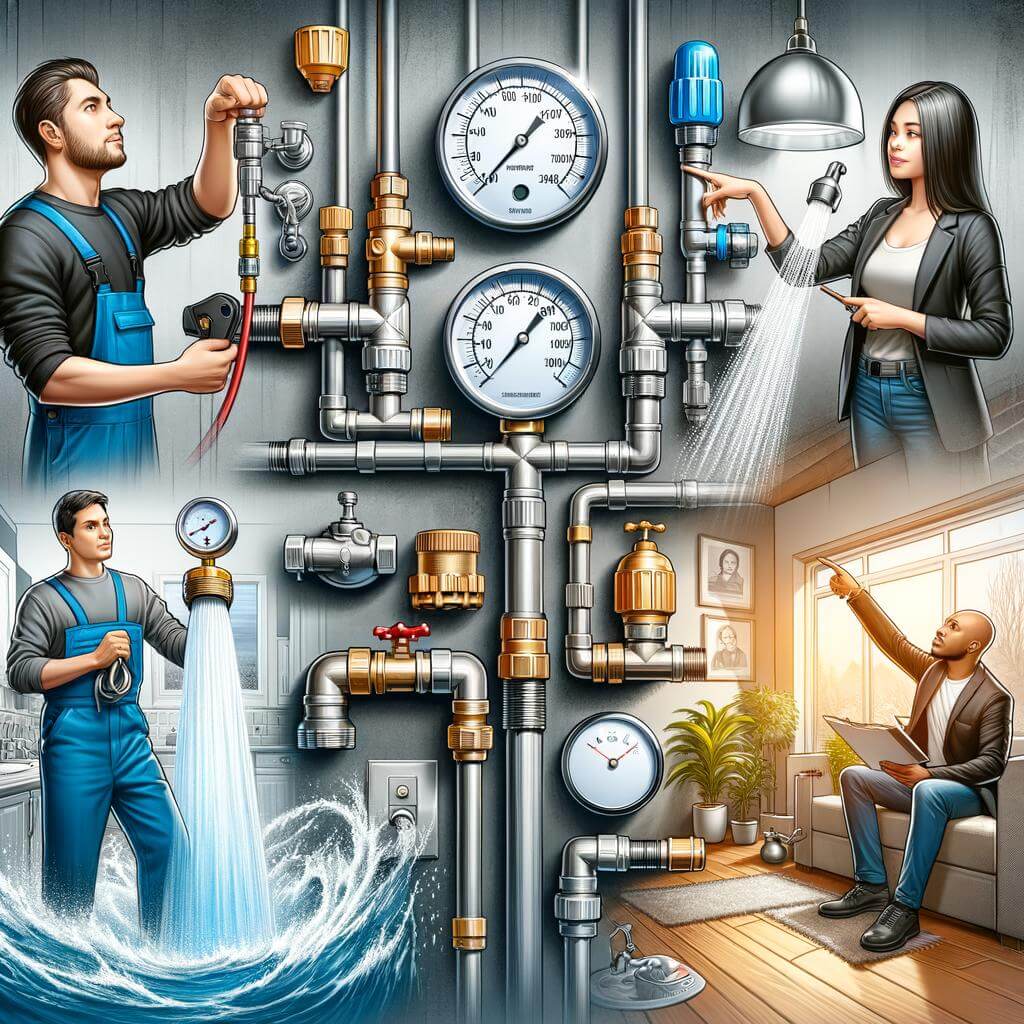
Addressing High Water Pressure Problems at Home
High water pressure in your home can indeed cause your pipes to become noisy, among other issues such as pipe leaks, and fixtures damage. Few steps can be initiated to address this situation. Initially, check whether the water pressure is genuinely high or not. An ideal residential water pressure should be in a range of 45-55 psi (pounds per square inch). You can use a pressure gauge for this. If the water pressure is higher than 60 psi, then it needs to be addressed.
The process of reducing high water pressure involves installation of a pressure reducing valve (PRV) which can be done by a professional plumber. However, if you decide to install it on your own, below are a few steps you can follow:
- Step 1: Turn off the water supply.
- Step 2: Cut a section of the mai water pipe, place the valve into the pipe and screw it tightly into place.
- Step 3: Now, turn the screw on the valve to adjust the pressure.
This will reduce the water flow and subsequently, the noise from the pipes.
| Issue | Common Cause | Solution |
|---|---|---|
| Noisy water pipes | High water pressure | Install pressure reducing valve (PRV) |
However, if the noise continues even after reducing the pressure, then it might be possible that there are air bubbles trapped in your pipes. In such situations, you can flush the entire system or use a plumber’s snake to remove the bit of air and stop the noise.
Remember, it’s always better to seek professional help if you are uncertain about handling plumbing issues. High water pressure is not a minor issue and needs to be taken seriously as it can cause severe damage to your home’s plumbing system.
The Importance of Mounting Pipes Correctly to Reduce Noise
Proper installation and secure mounting of your water pipes are critical components to effectively minimizing any unwanted noise within your home. This is typically caused by various factors such as high water pressure, loose pipes, and even the velocity of the water itself. By investing time in ensuring that your pipes are installed correctly, you can significantly reduce their potential for rubbing against other surfaces and causing disruptive sounds.
- Secure Loose Pipes: If the pipes are not stabilized and they move around when water is flowing, they can produce knocking or ticking sounds. Inspect your pipes and fasten any loose sections to the wall or floor using pipe clamps. Make sure they are snug, but not too tight, as over tightening could lead to damage.
- Install Water Hammer Arrestors: These devices absorb the shock of water hammer, a common cause for noisy pipes. They can be installed on the water line near the source of the noise.
- Lower the Water Pressure: High water pressure can cause pipes to vibrate and generate noise. You can reduce water pressure by adjusting the pressure reducing valve, typically located near the water meter.
| Action | Benefit |
|---|---|
| Secure Loose Pipes | Prevents movement and associated noise |
| Install Water Hammer Arrestors | Absorbs shock from water flow, reducing noise |
| Lower the Water Pressure | Reduces vibration and noise from high-pressure water flow |
Remember, if the noise persists after trying these strategies, it may be best to consult with a professional plumber. Often, the issue could be rooted in more complicated problems within your plumbing system that require a more technical approach.
Fixing Loose Pipes: Practical Steps to take
One of the most common causes of noisy water pipes in the home is the loosening over time. But don’t worry – there’s no need to call a plumber just yet. With the right tools and a little spare time, you can quickly fix those annoying sounds.
Firstly, you need to locate the loose pipe. Start by turning on the faucet that’s causing the noise, then touch each pipe along its path to see if any are vibrating. Once you’ve found it, here’s how to sort it out:
- For minor shifts: Simply re-tightening the brackets supporting the pipe can fix moderate shifting. Carefully tighten the screws on the brackets with a screwdriver. Make sure you don’t overtighten!
- For major shifts: If the pipe has shifted substantially and is causing constant noise, you might need to add new brackets. They’re widely available in hardware stores, and their installation requires no professional help. Choose the correct size for your pipe, mark the spot for installation, drill holes and then screw the brackets in place.
- Using padding:Sometimes, pipes vibrate because they come into contact with other pipes, walls, or surfaces. Try wrapping a piece of rubber around the pipe where it’s making contact. This should cushion the vibration and reduce the noise.
Following these steps can significantly help to alleviate the noise from loose pipes. However, remember that not all noise is caused by loose pipes - it can also be a sign of problems like high water pressure, clogged vents or worn out washer valves. For such issues, it’s always recommended to get professional help.
Using the following table as a guide, you can determine what may be causing your noisy pipes and the potential solutions:
| Issue | Possible Cause | Solution |
|---|---|---|
| Noise when the tap is on | Loose pipes or high water pressure | Fix loose pipes or install a pressure reducing valve |
| Noise when the tap is off | Water trapped in the pipe | Drain and refill your pipes |
| Rumbling or vibrating noise | Pipes hitting against wall or each other | Add padding or distance between pipes and wall |
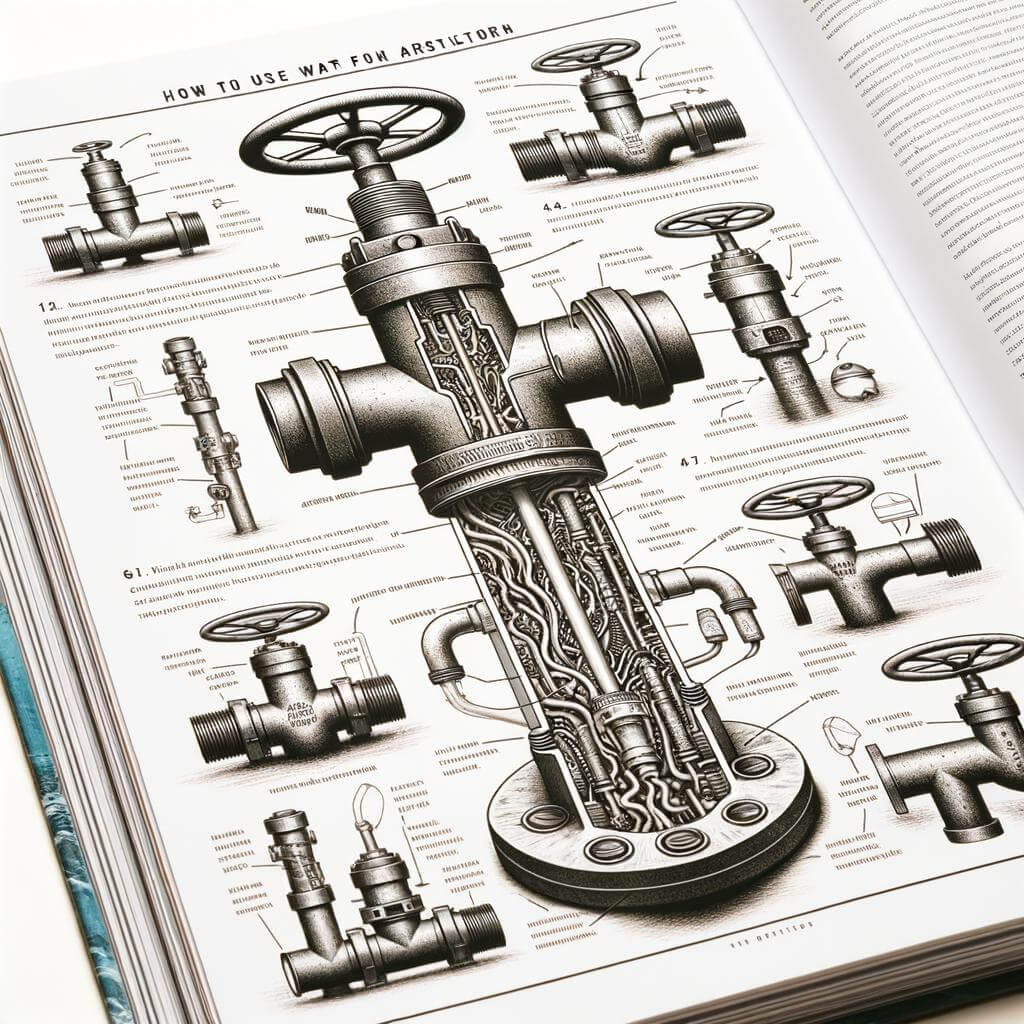
Expert Guide to Using Water Hammer Arrestors
Understanding Water Hammer Arrestors
A water hammer arrestor is a crucial plumbing device which prevents noisy water pipes at home – a disturbance often caused by ‘water hammer’. Water hammer results from a sudden stoppage of water flow, creating a pressure wave within the pipe, leading to the familiar hammering or banging sounds. A water hammer arrestor, equipped with an air-filled chamber, absorbs this pressure wave and nullifies the resultant noise. The two key elements of a water hammer arrestor are:
- The sealed air chamber which counteracts the sudden change in water velocity.
- The piston or moving component which prevents air from being lost in the water stream.
Expert Tips on Installing and Maintaining Water Hammer Arrestors
For effective usage and longevity of a water hammer arrestor, careful installation and routine maintenance are essential. Always ensure to install the arrestor close to the valve or faucet causing the water hammer. Most plumbing codes require arrestors to be situated within six feet of the valve. Here, using soldering or threaded connections is preferred over compression fittings for a secure fit. For maintenance, regular inspection every six months to one year is a must. Check for any water leakage, air loss, or component damage. Depending on the model of the arrestor, periodic recharging of the air chamber might be necessary.
| Regular Inspection Frequency | Every 6 months to 1 year |
| Installation Position | Within 6 feet of the valve |
| Maintenence Task | Check for leaks, air loss, or damage |
Adopting these expert-tips can ensure a peaceful and quiet home, untroubled by the disturbance of noisy water pipes.
Insulating Household Pipes to Minimize Noises
Dealing with noise from household water pipes can be both disruptive and annoying. However, by using some practical methods, it’s possible to insulate these pipes and effectively minimize noise. One effective way to tackle this issue is by wrapping the pipes in insulation materials designed specially for this purpose. These materials not only help in reducing the noise but also save your energy costs by preventing heat loss. The two commonly used insulation materials include fiberglass pipe wrap and plastic foam pipe insulation.
The use of fiberglass wrap involves wrapping this thick material around the noisy pipes, adhesive side towards the pipe. The thickness helps in significantly reducing the sound. On the other hand, plastic foam insulation is a tube-like material which can be easily slid over the pipe and secured in place. Both of these options are cost-effective and can be easily found at your local hardware stores. Here is a simple comparison between the two:
| Fiberglass Pipe Wrap | Plastic Foam Pipe Insulation | |
| Installation | Wrapping around pipes | Sliding over pipes |
| Cost | Relatively cheaper | Slightly more expensive |
| Ease of Use | Requires more effort in installation | Simpler and quicker to install |
In conclusion, effective insulation is a viable solution to minimize noises coming from household pipes. The method you choose ultimately depends on your personal preference, availability, and budget.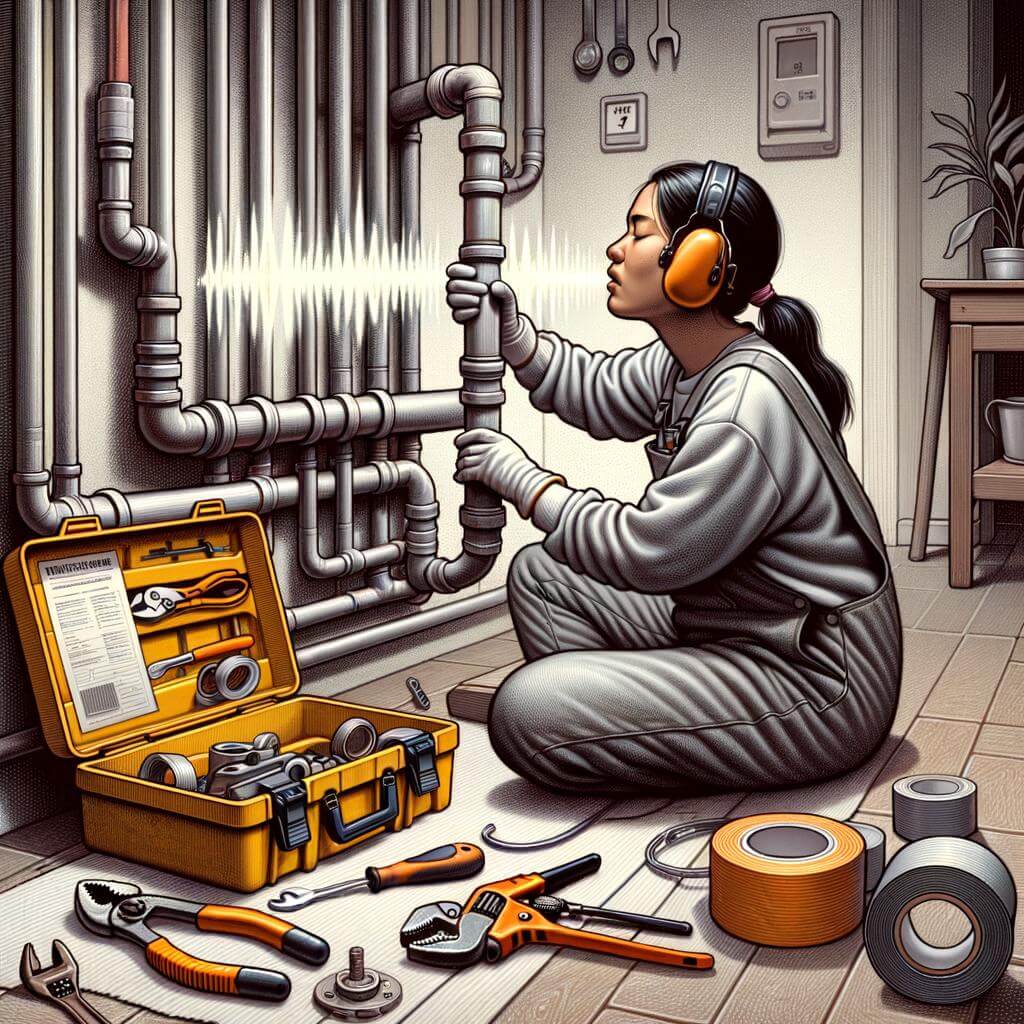
Resolving Noisy Pipes with Professional Plumbing Services
Noisy pipes can become an irritating background soundtrack to your daily life, making even the simplest tasks seem like a hassle. Fear not! With professional plumbing services, you can easily resolve these issues, restoring peace and tranquility to your living space. Let’s explore some tried and tested methods employed by professionals to silence those noisy water pipes.
One of the most common methods offered by professional plumbing services is water pressure adjustment. High water pressure can often cause pipes to rattle or make a loud hammering sound. A qualified plumber will assess your system’s pressure and adjust it as necessary to minimize noise. Water hammer arrestors are also a useful solution, specially designed to absorb the shock of water and halt the impact that causes unwanted noise.
Proper insulation is another trick in the toolbox of professionals. It not only reduces noise but also enhances energy efficiency. Insulating materials muffles the noise of water traveling through pipes. Lastly, pipe securement is a simple yet effective solution. Loose pipes can move and cause noise when water flows through them. Hence, professional plumbers make sure that all pipes are securely attached to walls, floor joists, and ceilings.
| Service | Description |
|---|---|
| Water pressure adjustment | Assessment of system’s pressure and adjustment to reduce noise |
| Water hammer arrestors | Devices designed to absorb the shock of water and reduce noise |
| Proper insulation | Reduces noise and enhances energy efficient |
| Pipe securement | Ensuring all pipes are securely attached to reducing movement |
Oftentimes, homeowners consider noisy pipes a minor annoyance and tend to overlook them. However, the persistent noise can sometimes indicate a deeper issue that may require immediate attention. By availing of professional plumbing services, one can not only silence the disruptive noises but also ensure the overall health of your plumbing system.
Key Takeaways
In conclusion, dealing with noisy water pipes at home can be an annoying experience, but utilizing these expert-approved methods can offer much-needed relief. From simply securing loose pipes to more advanced strategies like installing water hammer arrestors, there’s a solution for all noise levels and circumstances. Remember, it’s always crucial to understand the root cause of the noise before attempting to fix it. And if all else fails, don’t shy away from seeking professional help to diagnose and efficiently quieten your noisome water pipes. You deserve the tranquility and comfort of a noise-free home. With these expert tips at your fingertips, you can now tackle the issue of noisy pipes competently and confidently.

